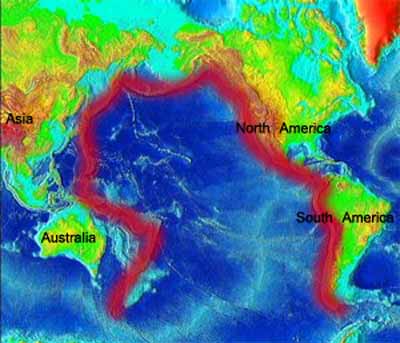Geothermal Energy. Heat Flow Measurements.

Geothermal energy is is the heat from the Earth. The Earth’s temperature varies widely, and geothermal energy is usable for a wide range of temperatures from room temperature to well over 300°F. For commercial use, a geothermal reservoir capable of providing hydrothermal (hot water and steam) resources is necessary. Geothermal reservoirs are generally classified as being either low temperature (<150°C) or high temperature (>150°C). The high temperature reservoirs are the ones suitable for, and sought out for, commercial production of electricity. Geothermal reservoirs are found in “geothermal systems,” which are regionally localized geologic settings where the Earth’s naturally occurring heat flow is near enough to the Earth’s surface to bring steam or hot water, to the surface.
Most geothermal reservoirs are deep underground with no visible clues showing above ground. But geothermal energy sometimes finds its way to the surface in the form of:
- Volcanoes and fumaroles (holes where volcanic gases are released).
- Hot springs.
- Geysers.
The most active geothermal resources are usually found along major plate boundaries where earthquakes and volcanoes are concentrated. Most of the geothermal activity in the world occurs in an area called the Ring of Fire. This area encircles the Pacific Ocean. Examples of geothermal systems include the Geysers Region in Northern California, the Imperial Valley in Southern California, and the Yellowstone Region in Idaho, Montana, and Wyoming.
The Main Types of Geothermal Systems:
- Closed Loop - fluid (typically a chemical compound) continuously re-circulates in closed piping from underground to a building or complex and back underground for the purpose of heat exchange.
- Open Loop - groundwater or surface water is pumped directly from the earth, used once for the purpose of heat exchange, and then discharged to the surface or underground.
- Standing Column - groundwater is pumped up through a central pipe, used once for heat exchange, and then discharged into the upper casing of the same well.

